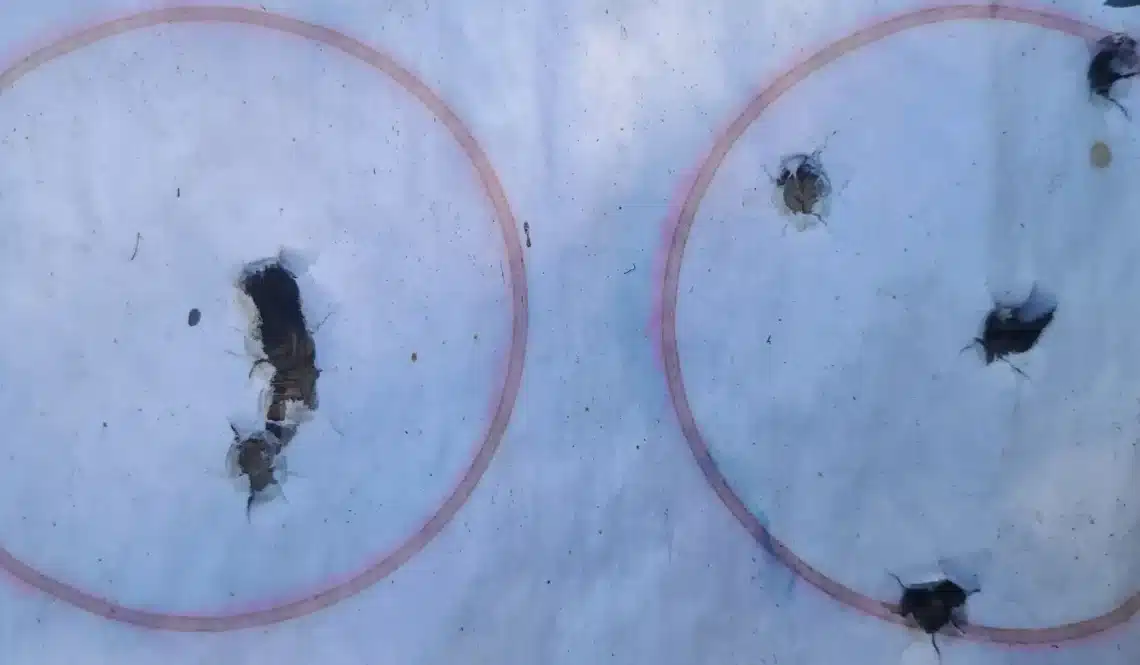Dry-fire training is a proven method for improving shooting skills, but the real test comes when you transition to live fire. A smooth and effective transition is crucial for maximizing the benefits of your dry-fire training. Understanding how to translate dry-fire training to live fire can dramatically improve your performance in competitive and real-life scenarios.
Here are some tips on how to make the transition and how DryFireMag can make it even smoother.
Preparing to Transition to Live Fire

Before you start your live-fire training, evaluate the skills you worked on during dry fire practice and set Specific, Measurable, Achievable, Relevant, and Time-Bound (SMART) goals for your live-fire sessions. Here’s an example of a SMART shooting goal.
- Specific: Increase your shooting accuracy with a 9mm handgun at a 25-yard target.
- Measurable: Consistently hit within a 4-inch group.
- Achievable: Achieve this by practicing three times a week, using 50 rounds per session, and focusing on my grip and stance adjustments.
- Relevant: Enhancing accuracy is important for your goal of competing in local shooting competitions.
- Time-bound: Aim to reach this level of accuracy within the next three months.
Mental preparation is crucial for effective live-fire practice. Approach each session with a clear and focused mind free from distractions. Mentally preparing helps reduce flinching and improves control during live fire.
Techniques for Smooth Integration
Begin your live-fire practice with the same basic drills you perform in dry-fire sessions. Starting with familiar drills helps build confidence and ensures that the skills developed during dry-fire practice are effectively transferred to live-fire. It’s also important to evaluate how well your dry-fire skills are transferring to live-fire. Pay attention to your accuracy, consistency, and overall performance. This assessment helps identify areas that need more attention or adjustment during dry-fire and live-fire sessions.
Switching to live fire adds noise and recoil, which affects your shooting. It is especially important to evaluate your stance and grip during live fire to assess how well you manage recoil. Another area to focus on is developing consistent sight alignment and trigger press. These are the hardest skills to transfer to live-fire training.
It is also easy to start anticipating shots during live-fire practice, increasing the chance of flinching. You can try randomly adding dummy rounds to your magazines during live-fire. Because you don’t know when the dummy round will be chambered, you can easily see if you’re anticipating the shot.
Using Dry-Fire and Live-Fire Training to Enhance Your Shooting
Your training needs to alternate between dry-fire and live-fire sessions. Both types of practice reinforce the skills learned during each. Dry-fire sessions allow you to focus on the fundamentals without the distraction of recoil and noise. Live-fire sessions provide feedback on your accuracy and control. Regularly switching between the two ensures that the muscle memory developed during dry fire is effectively transferred to live fire. This balanced approach helps maintain a high level of proficiency and readiness.
You should also maintain and regularly review a training log. This helps you develop the right goals and track your progress toward them. That way, you can spot performance trends, helping you adjust your training.
Training tools are another way to increase the transfer of skills from dry-fire to live-fire training. DryFireMag, for example, helps shooters maintain rhythm and continuity during dry-fire sessions. Because it resets the trigger for you, it provides immediate feedback on trigger pull and reset. This helps build the right muscle memory and improves trigger discipline.

Common Transition Challenges
One common transition challenge is performance anxiety. Performance anxiety can manifest as physical symptoms and mental barriers that negatively impact your shooting. Breathing and visualization exercises can help reduce anxiety. Starting with low-pressure drills and gradually increasing the complexity and stress level can also help.
Inconsistency and setbacks are common but can be hard to overcome. Inconsistencies in performance can stem from various factors like improper technique, mental distractions, or physical fatigue. It’s crucial to identify the root causes and address them effectively. Constantly training in shooting fundamentals and analyzing your performance will help address shooting inconsistencies and overcome setbacks.
If you are having trouble transitioning your dry-fire skills to live-fire training, seek guidance from experienced shooters or instructors. They can provide new insights and correct bad habits. Expert guidance also helps accelerate skill development and ensures safe practices.
Dry-fire training and live-fire training are both necessary to become a good shooter. Effectively transferring your dry-fire skills to live-fire is essential—but making the transition can be difficult. Regularly switching between the two and developing a consistent training regimen can help make the transition smoother. With DryFireMag, you can train the fundamentals without having to re-rack the slide. You can focus more on training and more effectively transfer your skills to live-fire training.
Take your dry fire training to the next level at DryFireMag!


